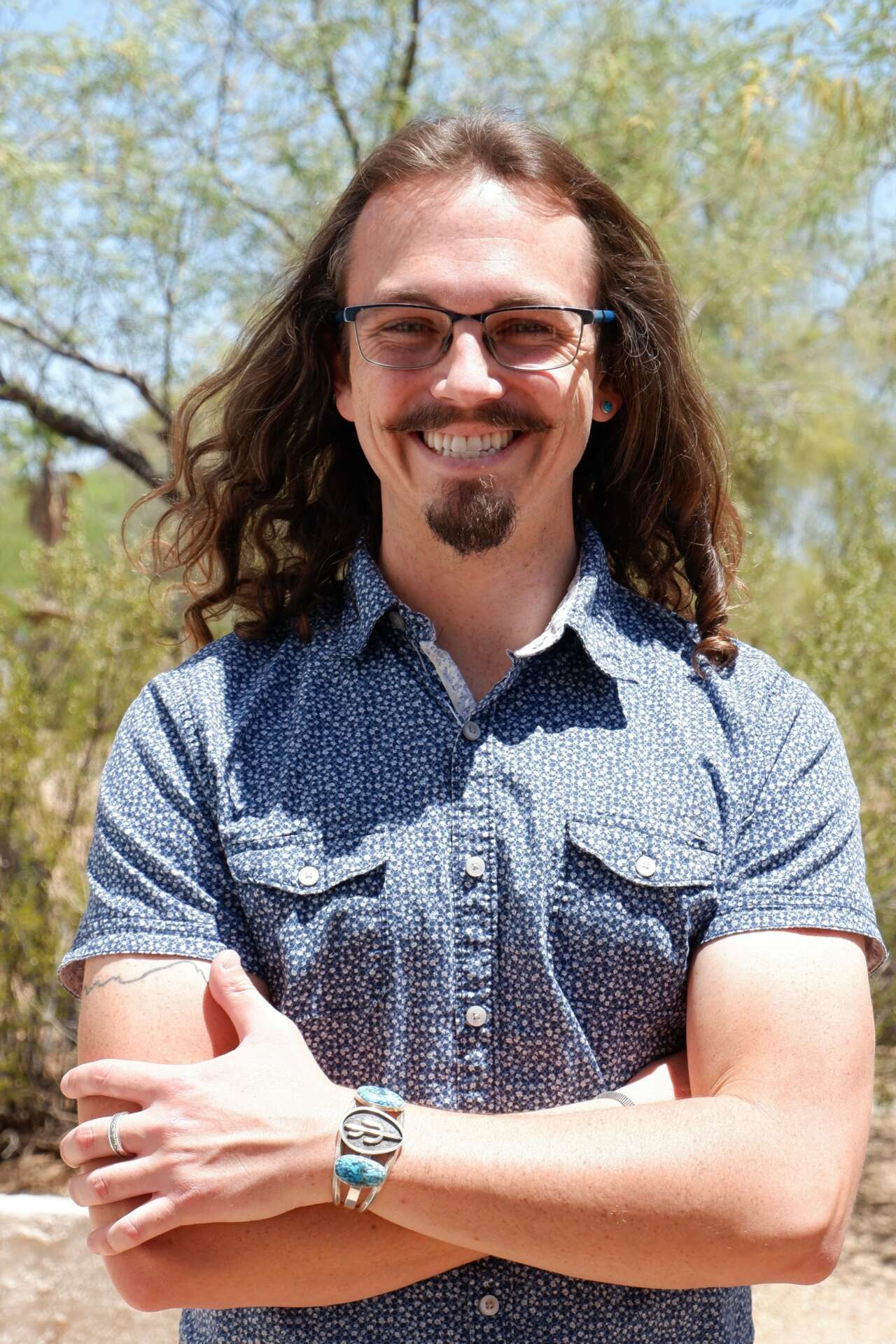Alright – so today we’ve got the honor of introducing you to Erik Buckley. We think you’ll enjoy our conversation, we’ve shared it below.
Erik, thanks for taking the time to share your stories with us today Can you talk to us about how you learned to do what you do?
Learning the crafts of silversmithing and lapidary (stone cutting) have been fairly difficult, even frustrating at times. My foundations in silversmithing began being built in my high school art class, an hour at a time, over a brief few weeks; it gave me enough knowledge to start dabbling with hammers, saws, and torches in my parents’ garage at home, but not quite enough to keep me from accidentally turning many of my work pieces into puddles of molten metal.
My progress was slow as I gradually taught myself so many different ways to make mistakes: heating incorrectly until I was left with molten pools of metal that solidified into useless blobs, being heavy-handed and impatient with files and abrasives to the point that any hope of detailed work was left in a pile of shavings on my benchtop, losing the gripping battle against a buffing machine until my work piece was yanked out of my fingers and whipped across the garage, never to be seen again.
I didn’t exactly know it, but I was teaching myself what to do primarily by finding out what NOT to do. At the time, it usually just felt frustrating and upsetting. But I so loved the feeling of creating something tangible with my two hands that the rare occasion that it worked was just enough to keep me coming back for more.
My collection of “what not to do” has continued to expand with increasing specificity as my knowledge has grown, and I’ve been fortunate enough to be in roles where I’ve been able to share many of those mistakes as I’ve helped other aspiring silversmiths learn the craft, starting with my seven-year stint in a jewelry supply shop where I would encounter students and experts alike, being able to glean useful insight from industry veterans and share from my growing list of missteps with the students just starting out. Since then, I’ve been able to continue to pass along those valuable lessons as a private instructor, a live demonstrator, and I’ve even tried to situate myself as a bit of a community resource for local metalsmiths, in hopes that my mistakes can be condensed for them to save a lot of headache.
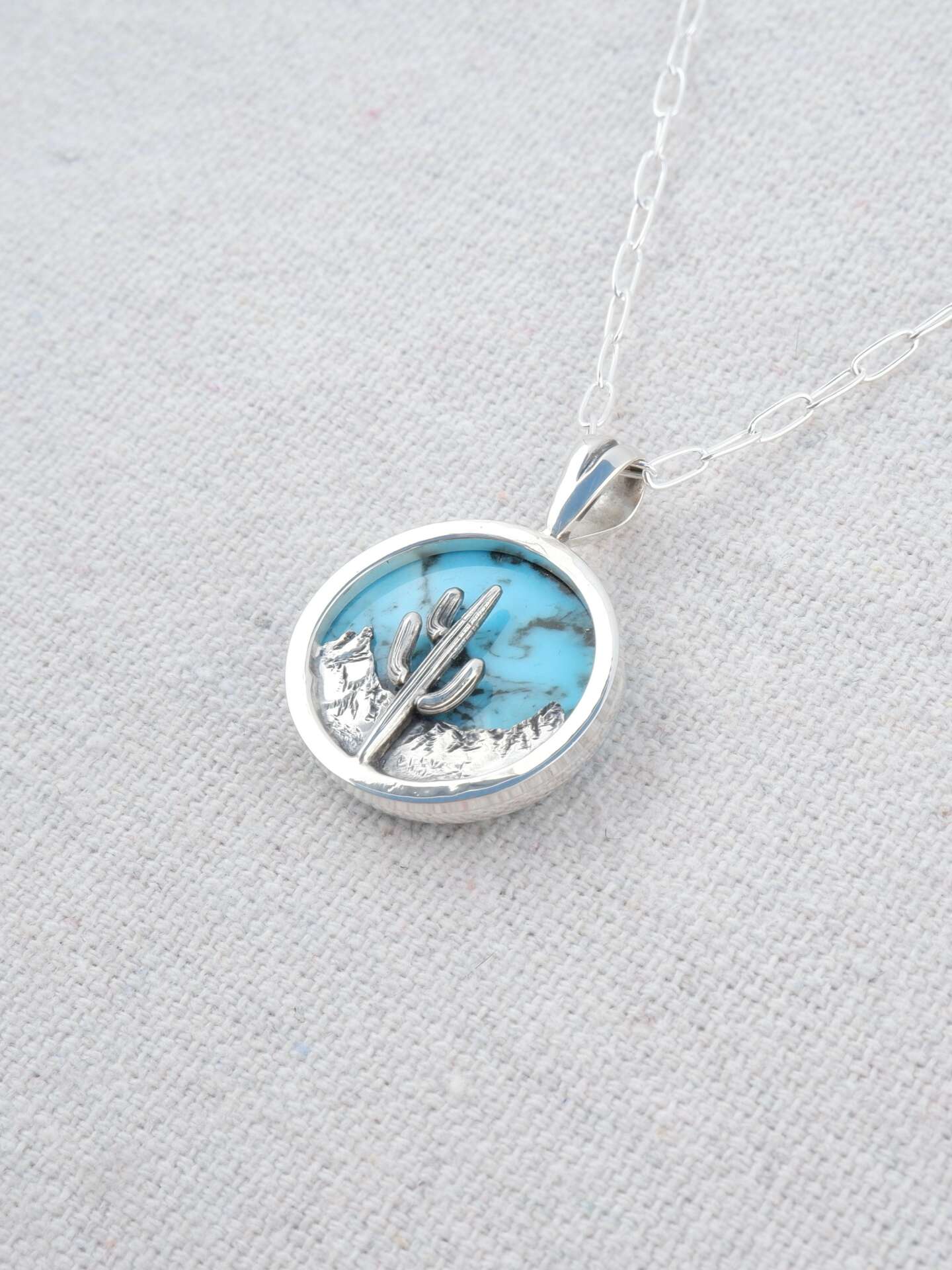
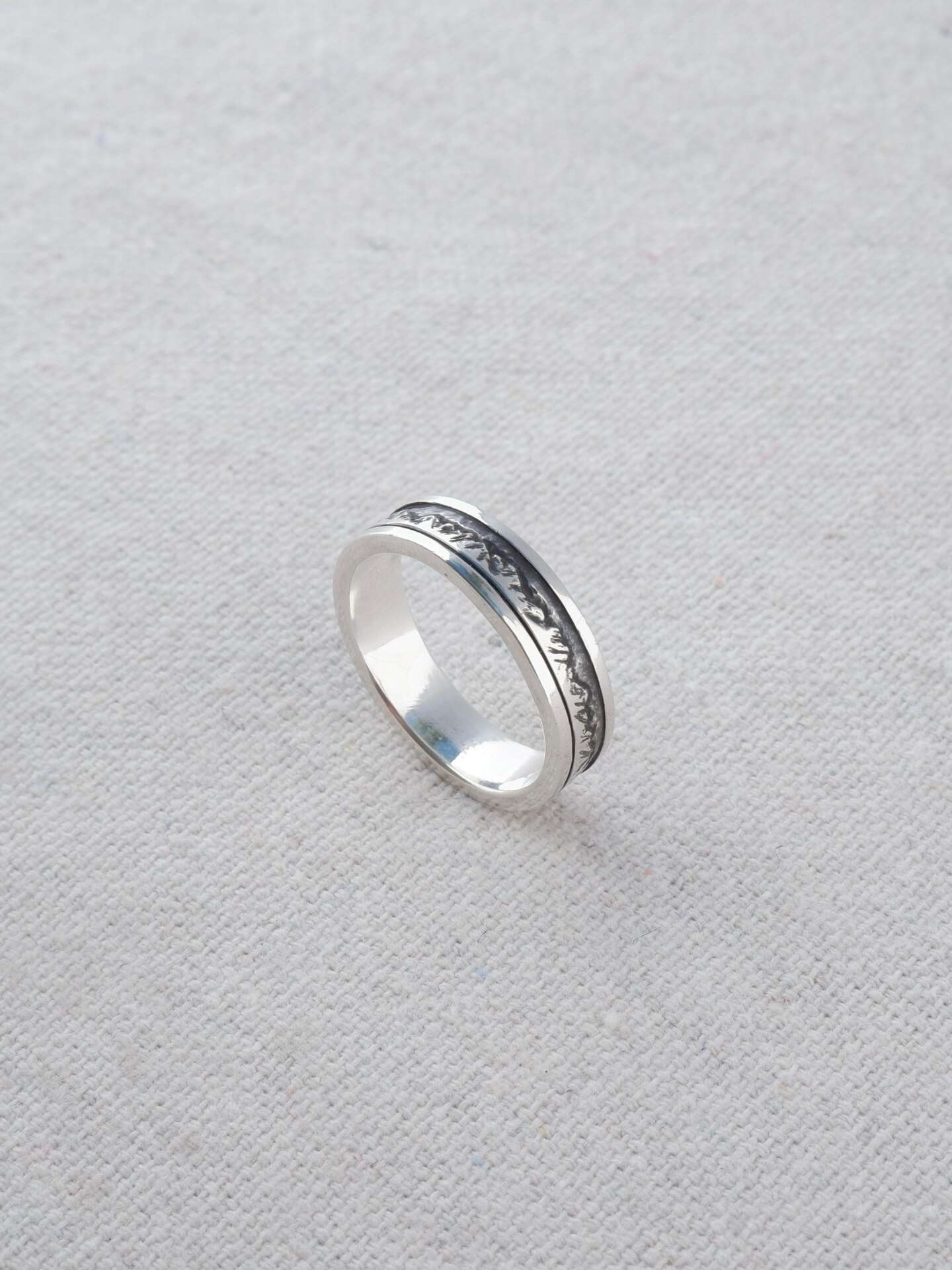
Awesome – so before we get into the rest of our questions, can you briefly introduce yourself to our readers.
From my humble beginnings in the jewelry industry as a first-year high school student working with basic tools from the hardware store, I’ve amassed an entire studio’s worth of tools and equipment to allow me to start with a palm-sized chunk of rough rock and a little bit of silver sheet and wire and be able to turn those into finely polished, mirror-finished jewelry that’s beautifully suited for wedding days, rodeo parades, or just for daily wear.
I craft my jewelry with the goals of making something that looks great, that feels great, that makes the wearer feel great, and that will last for years, decades, or even lifetimes. I aim to tie in high levels of artistry with my craftsmanship, often turning to nature as my primary inspiration, recreating complex desert scenes with realistically textured mountains, three-dimensional saguaros, and other iconic Sonoran desert plants like prickly pear cactus, yucca, and agave.
I take quite a bit of pride in the level of craftsmanship I put into my work, aspiring for near-perfection with a level of realism in my desert scenes, hidden solder joints, and a finish so shiny you can see your beautiful reflection in it. One of my proudest moments, though, came when a painter whose work I greatly admired paid me a compliment that really stuck with me: “It looks like a painting!” she said of one of my desert scenes with awe in her face. That was one moment when I felt truly seen not only as a jeweler but as an artist.
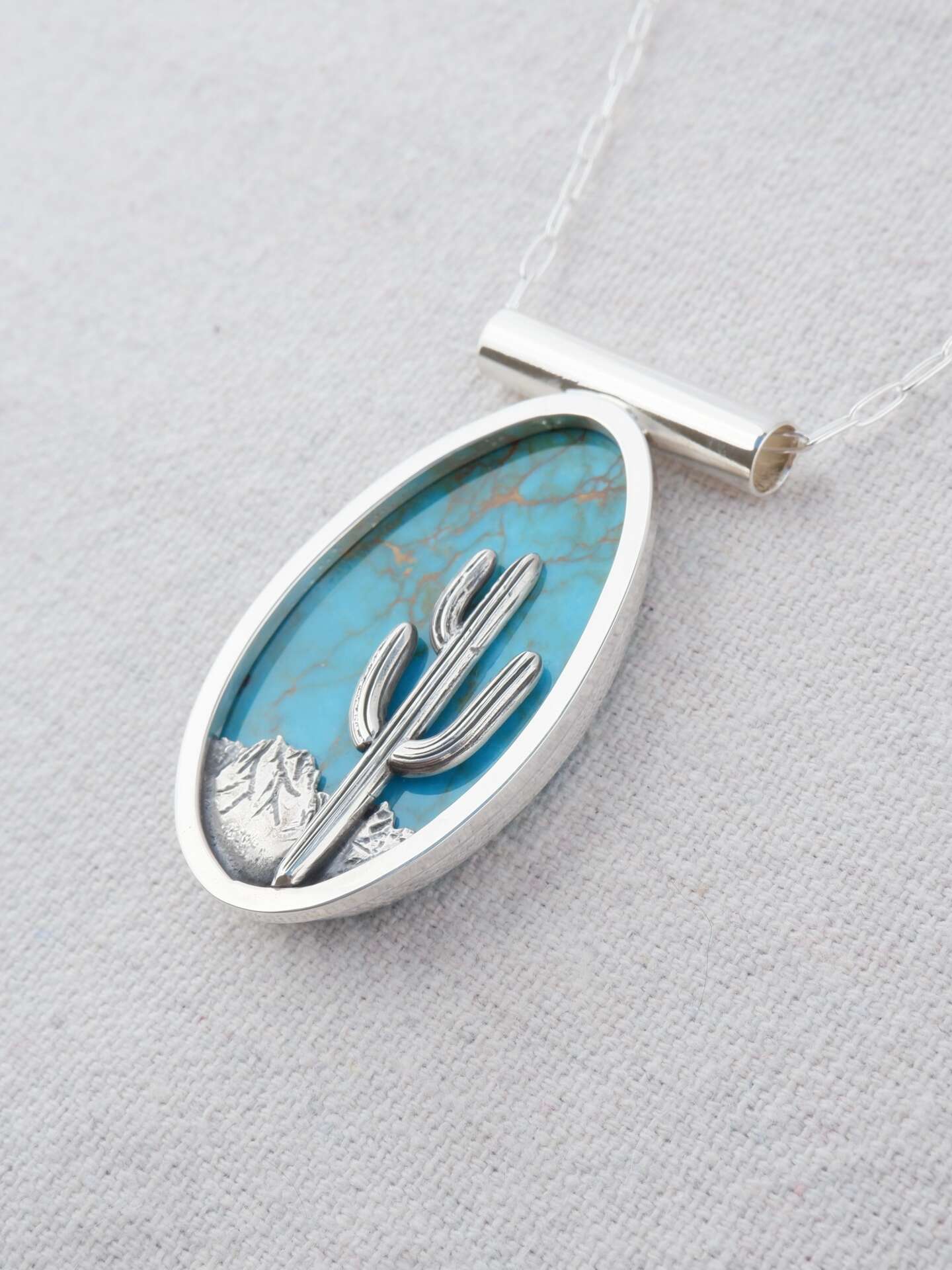

How can we best help foster a strong, supportive environment for artists and creatives?
Our society at large has turned away from handcrafted goods in favor of pieces that are mass-produced at low cost to maximize profits, much to the detriment of skilled creatives, sometimes driving them to lower their prices below their true value just to be able to compete with the large scale producers, if not running them out of business entirely.
There’s not a single solution that will tackle all the implications of these manufacturing and marketing giants who create products and manufacture trends to sell them, one after another, but one step in the right direction is to start to recognize the value in something handcrafted and to appropriately support the people who make them, because the benefit of buying one item that’s handmade, high quality, and artistically unique extends beyond just being able to hold, wear, or display it; purchasing handcrafted goods from artists helps to expand our vibrant artistic communities, it helps to put food on the artist’s table instead of lining the pockets of executives at faceless corporations. And don’t even get me started on those same corporations attempting to copy designs from small-scale skilled artists.
Consumers’ dollars are so much more impactful when they support skilled artisans making handcrafted goods, from helping art movements progress as a whole to helping support those individuals who have dedicated their precious time and energy to their respective crafts.
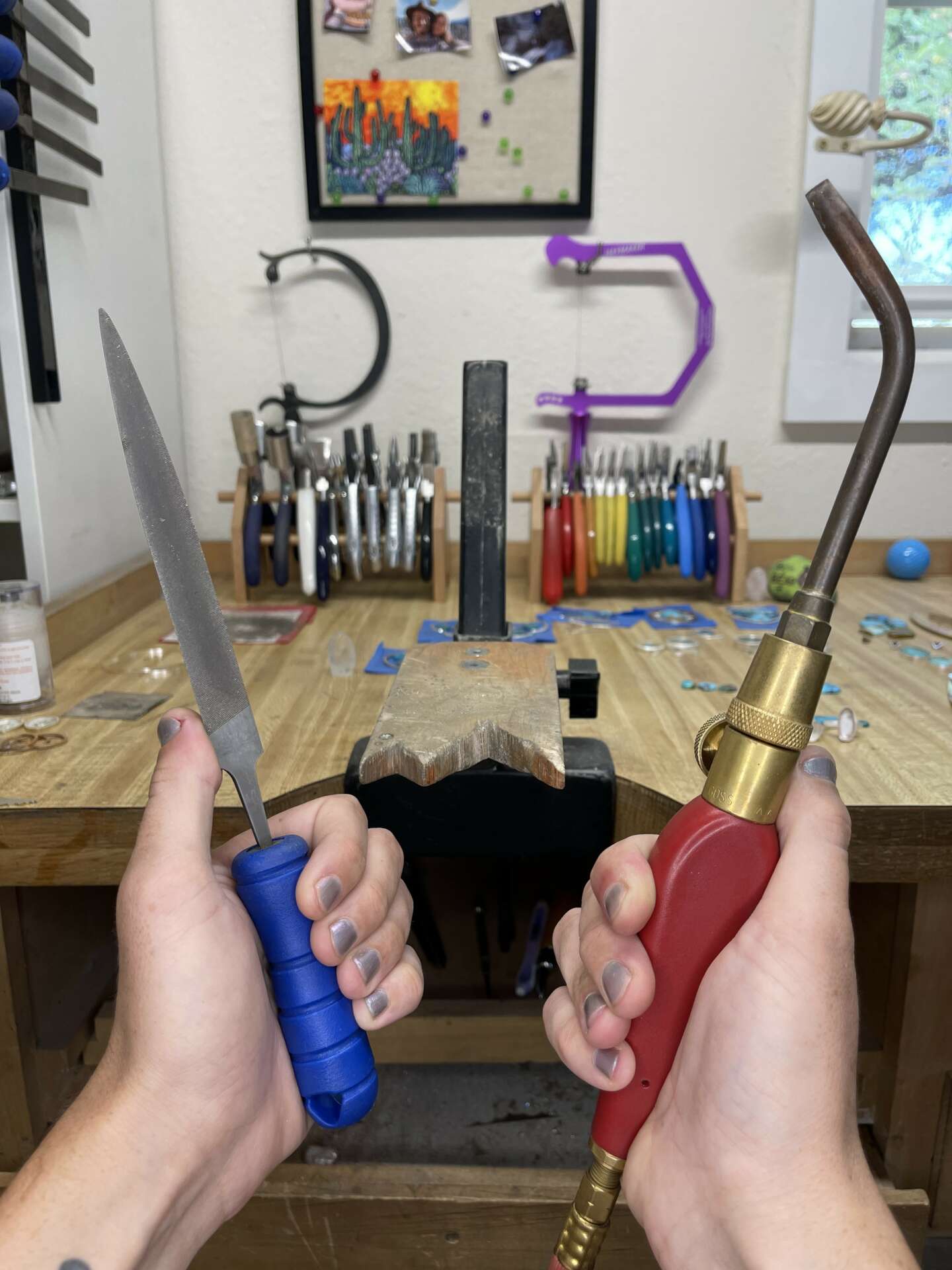
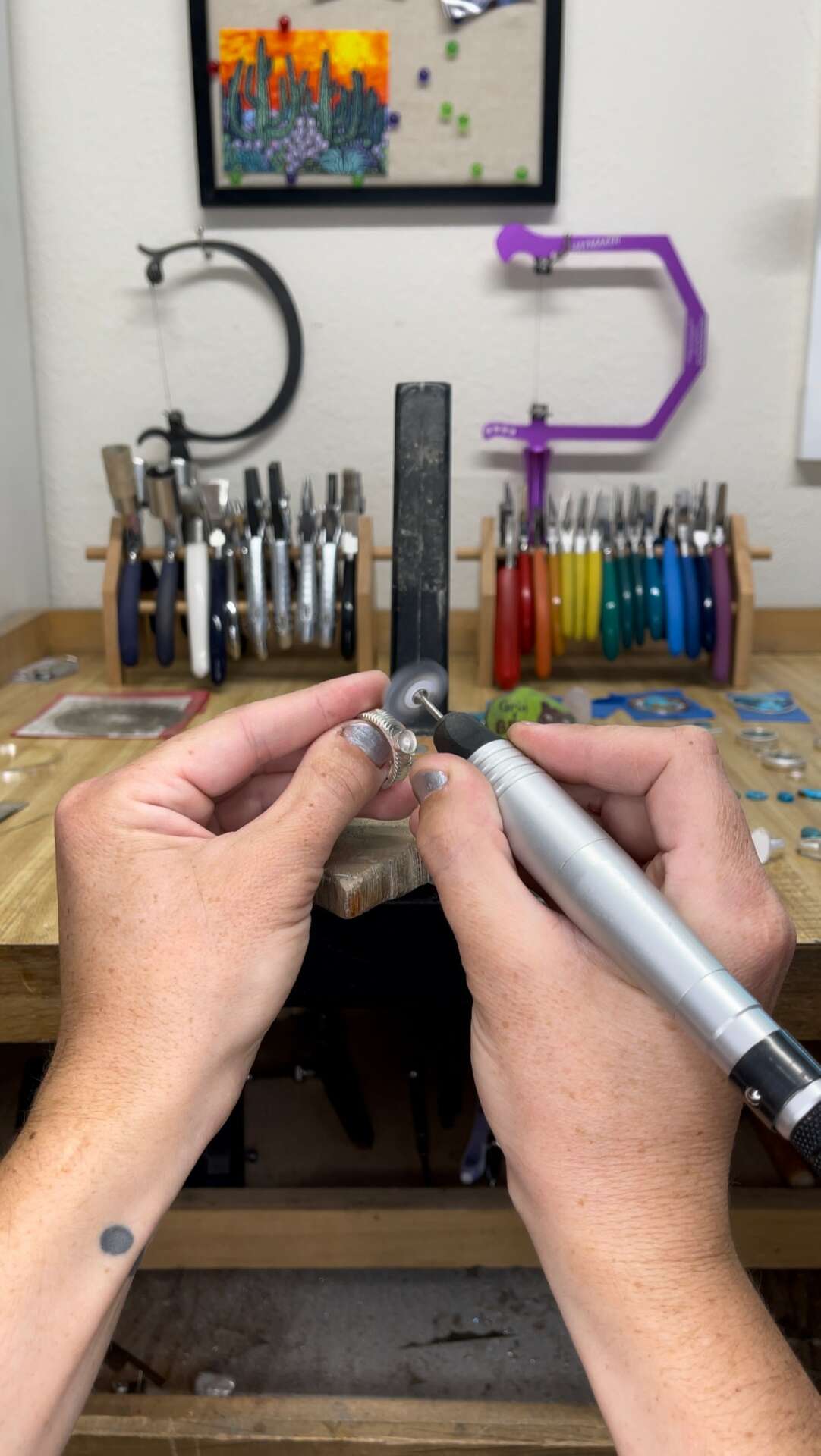
Is there a particular goal or mission driving your creative journey?
I have multiple goals that guide and direct me in my creative journey. I strive to create beautiful and high quality work that brings joy into people’s lives for years to come. I’m driven to share my love of nature and the incredible beauty of our natural world, especially our local Sonoran Desert. I’m also constantly trying to learn and progress in my craft, which keeps me creating.
In addition to those, I aim to effect positive social change by way of using portions of proceeds to support important causes like the Planned Parenthood Action Fund to fight for and support access to reproductive healthcare, or by dedicating a portion of my own store to feature other LGBTQIA+ artists as a way to uplift and amplify them in a world that so often likes to keep us silent.
In short, I suppose what drives me is to share joy and beauty and to push back against hate and intolerance.


Contact Info:
- Website: ENBJewelry.com
- Instagram: instagram.com/enb_jewelry
Image Credits
Erik Buckley and Julius Schlosburg


